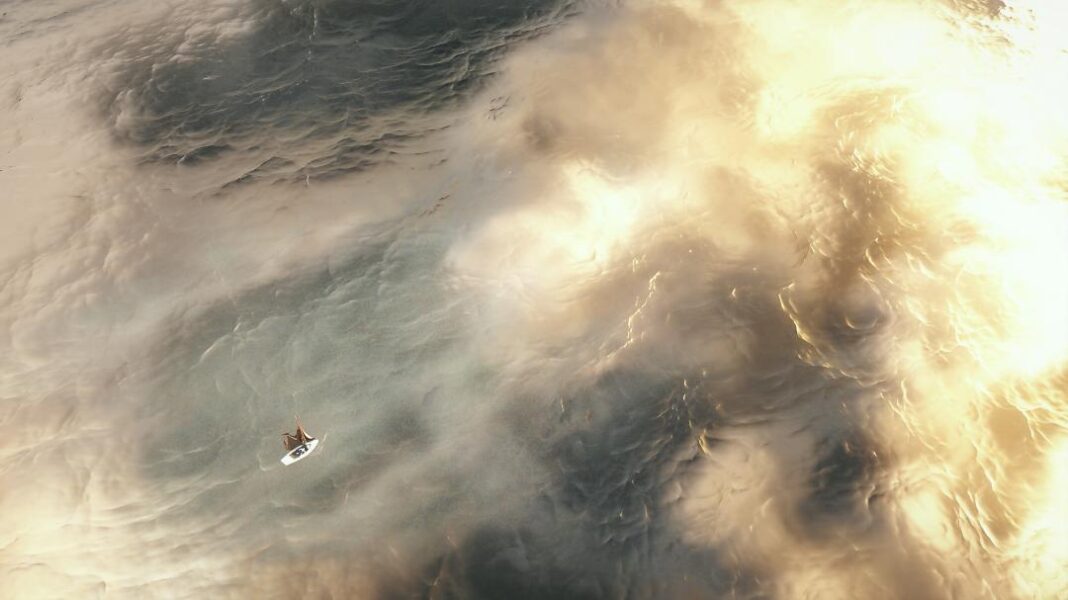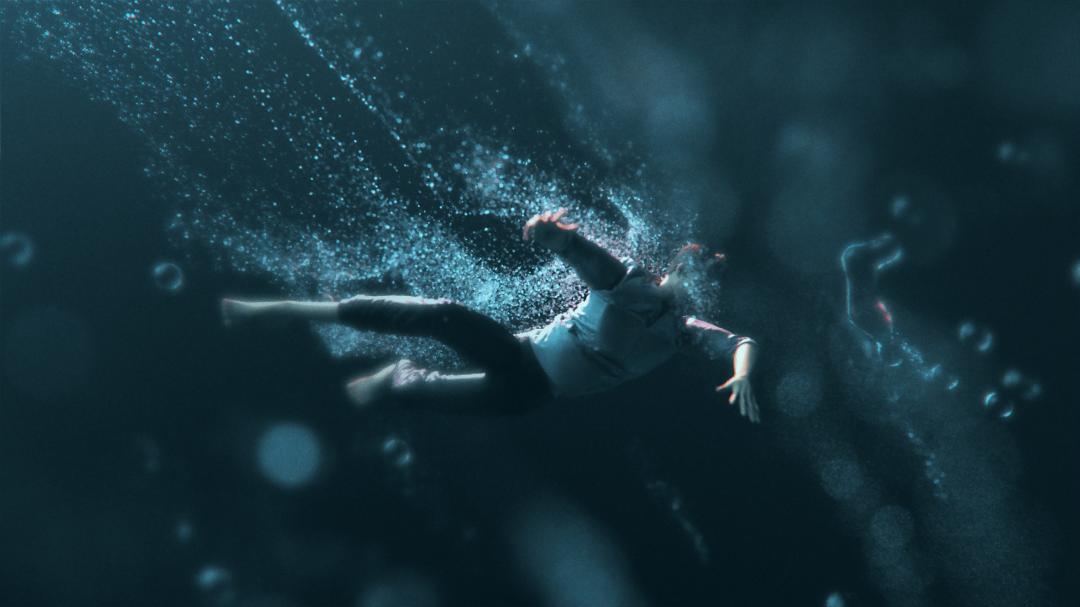Chun Chun Chang’s new 3D animated short film AURA encompasses the spirit of the mortal and immortal as a man in an ocean storm discovers a mysterious phenomenon.
Film And TV Now spoke with the film-maker about the film and its’ process making it.
FILM AND TV NOW: Animation often provides a very complex perspective using simple ideas. What was the core idea of AURA originally?
CHUN CHUN CHANG: Aura is a 3D animated short film about a mortal who encounters the goddess of the wind inside a storm. She is both the storm itself that appears fierce as nature and the wind that’s gentle as a woman’s figure.
The initial inspiration for Aura came from William Forsythe’s choreography in ‘In the Middle, Somewhat Elevated.’ I was fascinated by the contrasts between the dancers’ movements, such as push and pull, acceleration and deceleration. I was so inspired by it that I wanted to create a short film with contrasting vibes.
I spent half a year developing the story and trying to find a subject to deliver the concepts of gentleness and fierceness. I came across Greek mythology and happened to find the story of Aura, the goddess of the wind. Her original story is quite sad because she goes crazy and is transformed into a breeze by Zeus. I was quite fascinated by this concept of her representing the breeze and the fresh cool air, so I decided to use her as the blueprint of the story. And what better way to present both gentleness and fierceness than the wind itself?
Around that time, a friend of mine went to Iceland and sent me a postcard with the description of an icon. The icon was from an Icelandic magical stave called ‘Wayfinder.’ Its purpose is to help the person carrying it to find the way home through rough weather. This inspired me to devise the ending where the goddess doesn’t keep the mortal to stay with her inside the storm; instead, she lets him go and then disappears with the storm.
The shape of a spiral keeps appearing throughout the film. It represents the progression of revealing the essence of the nature of the goddess. She is the force that drags the mortal into the storm but also the waterspout that saves him from the ocean. He can only see the goddess’s true form by entering the eye of the storm, her eyes.
FTVN: The animation is a very involving style. What were your artistic and filmic influences when putting the short together?
CCC: I focused on making the film feel painterly and hazy.
The main visual reference I had for the film was Lillian Bassman’s photography. I really enjoy the blurriness of her work and how her female models are often quite hidden, which is what I was looking for in terms of ways to present my female character, Aura, in the film.
To the mortal character, the whole encounter is like a surreal dream (even though it may not be a dream), and dreams tend to be hazy and vague, or at least they are for me. I designed the layering of the 3D clouds to give the environment of the film 2D painterly textures because the film was inspired by ancient myths; I wanted the film to feel like a sequence of 2D paintings.
FTVN: We learn during the end credits that it was made possible through the John C. Hench Foundation via USC. Tell us about the Foundation.
CCC: This film was made during the time I was pursuing a master’s degree in the animation program of the School of Cinematic Arts, USC. USC was an amazing experience for me that I received great resources from the program while creating films, and I also got to learn from some of the best in the industry. For this film, I consulted with Candace Reckinger, Michael Patterson, and Bruce Block on refining my concepts for the films.
FTVN: The music and sound design are key strengths of the film. Tell us about your process with each of the crafts for AURA.
CCC: The whole story takes place inside a storm, and the climax takes place in the eye of the storm. Therefore, unlike the usual epic music in a climax, I wanted the music to be calm and gentle, which would not only represent the concept of the eye but also distinguish it from the fierce storm part. Similar to the above, I asked the composer/ conductor Sturdivant Adams to simplify the score (to be almost silent) in the parts that Aura showed up with gentleness; in those moments, she was just a breeze, so it needed to be pure and simple.
I asked the sound designer/engineer Dan Blanck to create the continuous but settled sound effects for wind, thunder, and waves. He did a great job of making the film feel immersive.
Score recording happened during the quarantine. Dan provided his studio for live recording and ensured all musicians kept the required social distance. Then, we all hopped on Zoom so Sturdivant could conduct the musicians live.
FTVN: Are you keen to remain as an animation-based film-maker or are there stories you feel that are more suited to a live action context?
CCC: I’m enjoying being an animation-based filmmaker. I think it’s more flexible because I’m not limited in terms of resources or budgets. That said, I still want to try filmmaking in a live-action context (but with animated elements).
FTVN: Would you like to expand this short into a feature version?
CCC: Mm no. I’d like it to remain a short film. The intention for Aura being so short (only 5 minutes) is to maintain the mysterious vibe. It is supposed to be just a glimpse into fantasy for both the protagonist and audience.
FTVN: The short has been selected for several festivals so far and has been awarded as well. What has been the general reaction by audiences to the short?
CCC: Most of the audiences think it’s beautiful and dreamlike.
FTVN: How long did it take to complete?
FTVN: What issues and themes are you keen to explore in your future work?
CCC: I’m open to any possibility.
For now, I’m working as a visual designer and VFX/lighting artist with a team from the CBS Pipeline Challenge program. We are making an animated short for the nonprofit organization School of Wheel. The story is about a little girl who faces multiple fears in her subconsciousness because of reading difficulties. The visual style of the film will switch between reality and the character’s imagination.
I always enjoy themes with a bit of the mythological and fantastical, so I think my future work wouldn’t move too far from that.
FTVN: How has the global situation affected your development and evolution as a film-maker?
CCC: The global situation has not affected me in terms of the creative aspect, but COVID-19 did change my original career expectations. I didn’t expect to work from home for almost a year. In a way, I think I lost the enjoyment of brainstorming ideas with artists in person, but the silver lining is that I have gained more time to create while staying at home.
FTVN: Finally, what are you most proud of about AURA?
CCC: The visual design. Aura is not my first film but it’s my first VFX heavy film. I spent a lot of time learning and revising the visual effects until they reached the look I want.

































